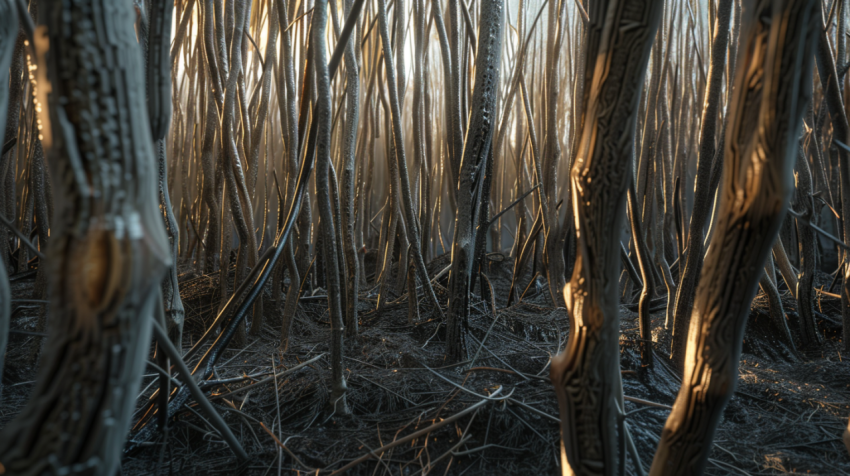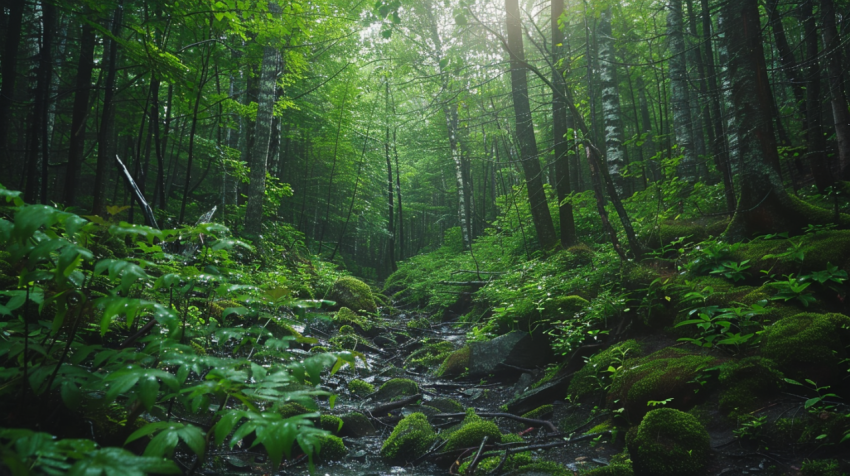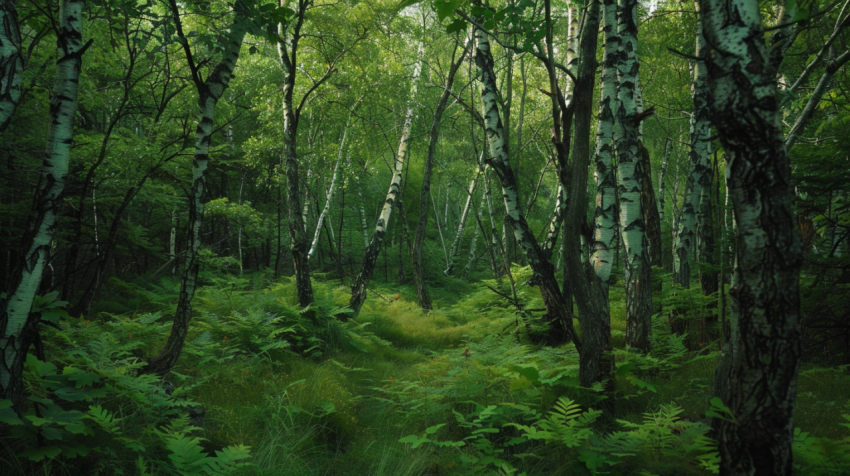











The Majesty of Forests: Exploring Diverse Types, Ecology & Importance
Forests are complex ecosystems dominated by trees and other woody vegetation. They are among the most biodiverse habitats on Earth, providing a home for countless species of plants, animals, fungi, and microorganisms. Forests play a crucial role in regulating the Earth's climate, maintaining water cycles, preventing soil erosion, and providing essential resources for humans. This exploration delves into the diverse world of forests, examining their different types, ecological intricacies, and vital importance to the planet and humanity.
1. Types of Forests:
Forests are classified based on various factors, including their latitude, climate, and dominant tree species.
- Tropical Rainforests: Found near the equator, these forests are characterized by high rainfall, warm temperatures, and incredible biodiversity. They are often called the "lungs of the Earth" due to their role in oxygen production. Examples include the Amazon rainforest and the Congo Basin.
- Temperate Forests: Located in mid-latitude regions with distinct seasons, these forests experience moderate rainfall and a range of temperatures. They can be further divided into:
- Temperate Deciduous Forests: Characterized by trees that lose their leaves in the fall, such as oak, maple, and beech.
- Temperate Coniferous Forests: Dominated by evergreen, cone-bearing trees like pine, fir, and spruce.
- Temperate Rainforests: Receive high rainfall and are dominated by large, coniferous trees like redwoods and Douglas fir.
- Boreal Forests (Taiga): Found in high-latitude regions with long, cold winters and short, cool summers. These forests are dominated by coniferous trees, such as spruce, fir, and pine. They represent the largest terrestrial biome on Earth.
- Mediterranean Forests: Characterized by hot, dry summers and mild, wet winters. They are adapted to drought and fire, with many evergreen shrubs and trees.
- Montane Forests: Found in mountainous regions. Climate and vegetation vary with elevation.
- Mangrove Forests: Found along tropical and subtropical coastlines. These forests are adapted to saline conditions and play a vital role in coastal protection.
2. Forest Structure and Layers:
Forests typically have a layered structure, with each layer supporting different communities of organisms:
- Emergent Layer: The tallest trees that rise above the canopy, receiving the most sunlight.
- Canopy: The main layer of the forest, formed by the crowns of the dominant trees. It is a rich habitat for many animals, including birds, monkeys, and insects.
- Understory: The layer beneath the canopy, consisting of smaller trees, shrubs, and saplings adapted to lower light levels.
- Shrub Layer: Composed of woody plants shorter than trees.
- Forest Floor: The ground layer, covered in leaf litter, fallen branches, and other organic matter. It is home to decomposers, fungi, and many invertebrates.
3. Forest Ecology and Interactions:
Forest ecosystems are characterized by complex interactions between organisms and their environment:
- Nutrient Cycling: Decomposers break down organic matter on the forest floor, releasing nutrients that are then absorbed by plants.
- Water Cycle: Forests play a vital role in the water cycle, absorbing rainfall, reducing runoff, and releasing water vapor through transpiration.
- Carbon Sequestration: Forests absorb and store large amounts of carbon dioxide from the atmosphere, helping to regulate the Earth's climate. They are considered carbon sinks.
- Symbiotic Relationships: Many forest organisms engage in symbiotic relationships, such as mutualism (both organisms benefit) and commensalism (one organism benefits, the other is unaffected). For example, mycorrhizal fungi form mutualistic relationships with tree roots, helping them absorb nutrients.
4. Forest Biodiversity:
Forests are biodiversity hotspots, supporting an estimated 80% of terrestrial biodiversity.
- Plants: In addition to trees, forests are home to a wide variety of other plants, including shrubs, ferns, mosses, and wildflowers.
- Animals: Forests provide habitat for a vast array of animals, from insects and spiders to large mammals like bears, deer, and big cats.
- Fungi: Fungi play crucial roles in forest ecosystems as decomposers and symbionts.
- Microorganisms: Bacteria and other microorganisms are essential for nutrient cycling and soil health.
5. Importance of Forests:
Forests provide numerous ecological, economic, and social benefits:
- Climate Regulation: Forests help regulate the Earth's climate by absorbing carbon dioxide and releasing oxygen.
- Water Purification: Forests filter and purify water, improving water quality.
- Soil Conservation: Forest roots help prevent soil erosion and maintain soil fertility.
- Biodiversity Conservation: Forests provide habitat for a vast array of species.
- Timber and Non-Timber Forest Products: Forests provide wood for construction and fuel, as well as other products like fruits, nuts, resins, and medicinal plants.
- Recreation and Tourism: Forests offer opportunities for hiking, camping, wildlife viewing, and other recreational activities.
- Cultural and Spiritual Significance: Forests hold cultural and spiritual value for many indigenous and local communities.
6. Threats to Forests:
Forests worldwide are facing numerous threats:
- Deforestation: The clearing of forests for agriculture, logging, and urbanization is the primary threat.
- Illegal Logging: Unsustainable and illegal logging practices deplete forest resources and damage ecosystems.
- Climate Change: Rising temperatures, altered precipitation patterns, and increased frequency of extreme weather events are impacting forest health and distribution.
- Forest Fires: While some fires are natural and beneficial, uncontrolled wildfires can destroy vast areas of forest.
- Pests and Diseases: Outbreaks of pests and diseases can weaken and kill trees.
- Invasive Species: Introduced species can outcompete native forest species and disrupt ecosystems.
7. Forest Conservation and Sustainable Management:
Protecting and sustainably managing forests is crucial for the well-being of the planet and humanity:
- Protected Areas: Establishing national parks, reserves, and other protected areas to conserve forest biodiversity.
- Sustainable Forestry Practices: Implementing logging practices that minimize environmental impact and ensure long-term forest health, such as selective logging and reforestation.
- Reforestation and Afforestation: Planting trees to restore degraded forests and establish new forests.
- Community-Based Forest Management: Involving local communities in forest management to ensure sustainable use and equitable sharing of benefits.
- Combating Climate Change: Reducing greenhouse gas emissions to mitigate the impacts of climate change on forests.
- Certification Programs: Forest Stewardship Council (FSC) and similar programs certify wood that has been harvested responsibly.
- Reducing Consumption: Being mindful of paper and wood consumption, recycling appropriately.
8. Forests and Indigenous Peoples: Many indigenous communities have lived in and managed forests for centuries. Their traditional knowledge and practices are invaluable for sustainable forest management.
9. Forests Provide Clean Air and Water: Forests act as natural filters, purifying the air by absorbing pollutants and releasing oxygen.
Conclusion:
Forests are essential ecosystems that provide a multitude of benefits to the planet and its inhabitants. From regulating the climate and maintaining biodiversity to providing resources and cultural value, forests are vital for a healthy and sustainable future. Addressing the threats to forests and implementing conservation and sustainable management practices are crucial to ensuring that these magnificent ecosystems continue to thrive for generations to come.
Forest Ecosystem, Forest Types, Tropical Rainforest, Temperate Forest, Boreal Forest, Taiga, Deforestation, Forest Conservation, Sustainable Forestry, Reforestation, Afforestation, Biodiversity Hotspot, Carbon Sequestration, Climate Regulation, Water Cycle, Nutrient Cycling, Forest Layers, Canopy, Understory, Forest Floor, Old-Growth Forest, Forest Degradation, Illegal Logging, Forest Fires, Pests and Diseases, Invasive Species, Amazon Rainforest, Congo Basin, Forest Stewardship Council (FSC), Community-Based Forest Management, Indigenous Peoples, Timber, Non-Timber Forest Products, Ecotourism, Wildlife Habitat, Endangered Species, Forest Ecology, Forest Structure, Forest Dynamics, Mangrove Forest, Montane Forest, Mediterranean Forest, Temperate Deciduous Forest, Temperate Coniferous Forest, Temperate Rainforest, Mycorrhizal Fungi, Symbiotic Relationships, Carbon Sink, Oxygen Production, Soil Erosion, Water Purification.

